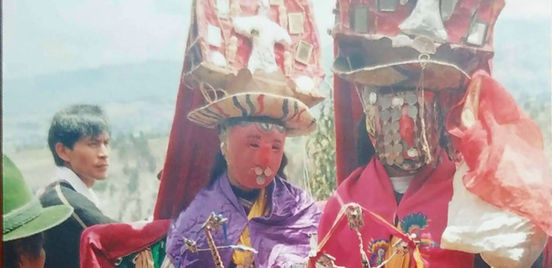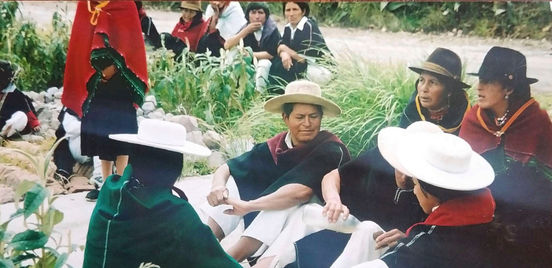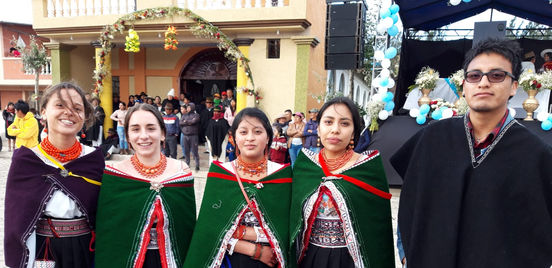SALASACA AND KICHWA: INDIGENOUS CULTURE
SALASACA
Salasaca originates from the ancient Inka Society Aymara. The Salasacas are said to have arrived from the Bolivian highlands, their ancestral origin, to today’s Ecuador. The history of the Kichwa people dates back tens of thousands of years ago. They organized into ethnic lordships and confederations, they developed a culture based on community ownership and reciprocity. However, their development was truncated with the arrival of the Spanish in 1492. The population was subdued and the territories belonging to these peoples became the property of the monarchy and of individual Spaniards.
As for Salasaca's current organization, the community work is done in "Mingas," and decisions are made democratically in the assemblies. The village's economy is based on agriculture and handicrafts. Each family owns its own land to cultivate and raise animals such as cows, pigs, chickens, sheep, guinea pigs, and rabbits. Women are responsible for spinning yarn in their free time, which is used for traditional clothes. There is a crafts market in Salasaca showcasing the local handicrafts such as tapestries, sweaters, hammocks, scarves, and traditional clothing.
TRADITIONAL INDIGENOUS CLOTHING
Men traditionally wear white trousers and a kushma (shirt without collar); a faja at the waist (handwoven belt); two ponchos, black over white, made of sheep's wool; a white wool hat and they have long hair.
Women wear a black anaco (wrap skirt) with four doubles on the right representing the four solstices of the sun held in a coloured faja; a peche jergueta (blouse-like); expensive coral necklaces and earrings; and they keep their hair tied in a white headband with coloured stripes and a white wool hat.


TRADITIONAL INDIGENOUS MUSIC
Music also plays an important role in Salasaca. On festivities, people get up to the sound of the pingullo and bass drum, while dancers show off their costumes. In addition, thousands of years ago instruments made of bone and feathers, animal skin and wood were played in Salasaca. Many of these have been lost, but a few are preserved in Salasaca's museum. The indigenous instruments are: dulzaina, bone flute, box, rondador, xylophone, and quena.
LOCAL FESTIVALS/TRADITIONS
Salasaca is known for its culture, festivities and traditions. As volunteer, you are welcome to participate in the traditions and festivities of the community. Don’t miss out on this unique opportunity!
Caporales: a 3-day festival in February to remember the resistance of the indigenous and black people against the Spanish conquerers.
Inti Raymi: the festival of the sun, celebrated on June 21st (summer solstice). It is very special, and sacred celebration because Salasaca is very close to the equator.
Finados: Day of the dead, celebrated on November 2nd at the cemetery, to honor and remember the deceased.
Capitanes: a three-day festival in December that celebrates the Spanish conquest and Salasaca’s participation in the uprising of Eloy Alfaro.
KICHWA LANGUAGE:
Kichwa is the official language of Salasaca. In addition, it is also the official language of the Indigenous communities in Ecuador. If you are considering volunteering with us, you can find useful expressions for your daily life here below. But don’t worry - Salasaca’s inhabitant are bilingual in Kichwa and Spanish.







































